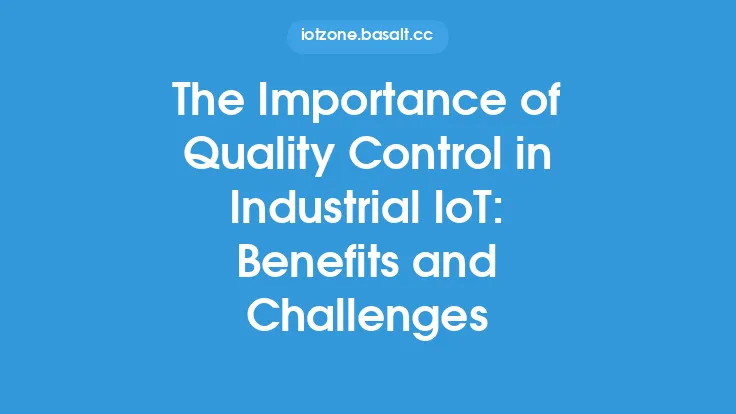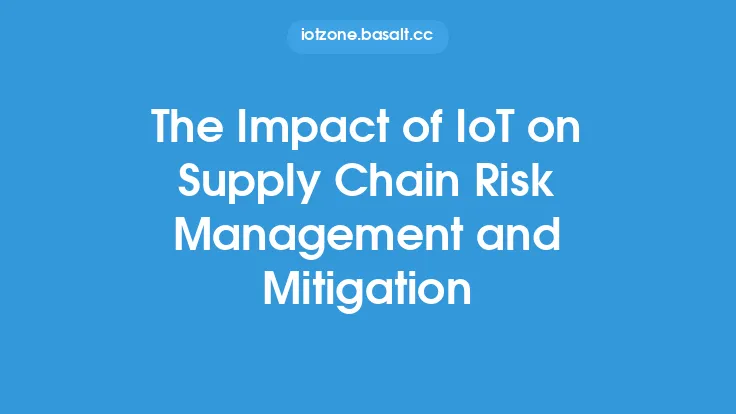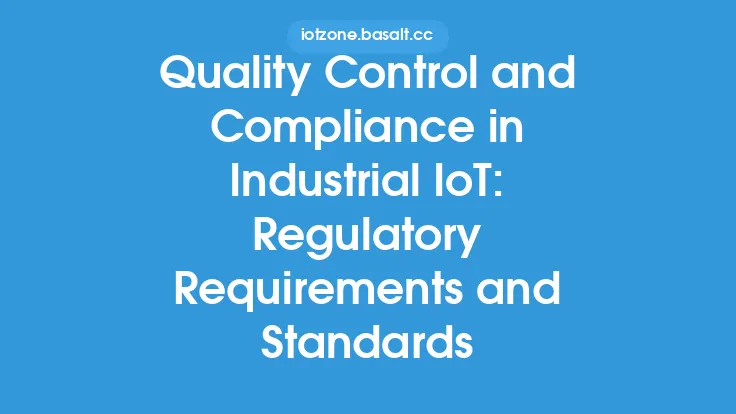The Industrial Internet of Things (IIoT) has revolutionized the way industries operate, with connected devices and sensors enabling real-time monitoring, automation, and data-driven decision-making. However, this increased connectivity also introduces new security risks and threats, making quality control a critical component of IIoT security. In this article, we will delve into the impact of quality control on IIoT security, exploring the risks and threats associated with IIoT devices and systems, and discussing the measures that can be taken to mitigate them.
Introduction to IIoT Security Risks
IIoT devices and systems are vulnerable to a range of security risks and threats, including hacking, malware, and denial-of-service (DoS) attacks. These risks can have severe consequences, including disruption to operations, theft of sensitive data, and even physical harm to people and equipment. The complexity of IIoT systems, which often involve multiple devices and protocols, can make it difficult to identify and mitigate these risks. Quality control plays a crucial role in addressing these risks, by ensuring that IIoT devices and systems are designed and manufactured with security in mind.
The Role of Quality Control in IIoT Security
Quality control is essential for ensuring the security of IIoT devices and systems. This involves a range of activities, including design review, testing, and validation, to ensure that devices and systems meet rigorous security standards. Quality control measures can help to identify and mitigate potential security risks, such as vulnerabilities in software or hardware, and ensure that devices and systems are configured correctly and securely. By integrating quality control into the development and deployment of IIoT devices and systems, organizations can reduce the risk of security breaches and ensure the integrity of their operations.
Types of IIoT Security Threats
IIoT devices and systems are vulnerable to a range of security threats, including:
- Network-based threats: These include hacking, malware, and DoS attacks, which can be launched over the internet or through local area networks.
- Device-based threats: These include vulnerabilities in device software or hardware, which can be exploited by attackers to gain access to sensitive data or disrupt operations.
- Data-based threats: These include threats to the integrity and confidentiality of data, such as data breaches or tampering.
- Physical threats: These include threats to the physical security of devices and systems, such as tampering or theft.
Quality Control Measures for IIoT Security
To mitigate the risks and threats associated with IIoT devices and systems, organizations can implement a range of quality control measures, including:
- Design review: This involves reviewing the design of IIoT devices and systems to ensure that they meet rigorous security standards.
- Testing and validation: This involves testing and validating IIoT devices and systems to ensure that they function correctly and securely.
- Configuration management: This involves ensuring that IIoT devices and systems are configured correctly and securely, and that changes to configurations are carefully managed.
- Vulnerability management: This involves identifying and mitigating vulnerabilities in IIoT devices and systems, such as vulnerabilities in software or hardware.
- Penetration testing: This involves simulating attacks on IIoT devices and systems to identify vulnerabilities and test defenses.
Implementing Quality Control for IIoT Security
Implementing quality control for IIoT security requires a structured approach, which involves:
- Establishing security policies and procedures: This involves defining security policies and procedures for IIoT devices and systems, and ensuring that they are communicated to all stakeholders.
- Conducting risk assessments: This involves identifying and assessing the risks associated with IIoT devices and systems, and prioritizing mitigation efforts.
- Implementing security controls: This involves implementing security controls, such as firewalls, intrusion detection systems, and encryption, to protect IIoT devices and systems.
- Monitoring and incident response: This involves monitoring IIoT devices and systems for security incidents, and having incident response plans in place to respond quickly and effectively.
Best Practices for Quality Control in IIoT Security
To ensure the effectiveness of quality control measures for IIoT security, organizations should follow best practices, including:
- Collaboration between development and security teams: This involves ensuring that development and security teams work together to design and implement secure IIoT devices and systems.
- Continuous testing and validation: This involves continuously testing and validating IIoT devices and systems to ensure that they remain secure over time.
- Use of secure protocols and standards: This involves using secure protocols and standards, such as TLS and IPsec, to protect IIoT devices and systems.
- Regular security audits and risk assessments: This involves regularly conducting security audits and risk assessments to identify and mitigate potential security risks.
Conclusion
Quality control plays a critical role in ensuring the security of IIoT devices and systems. By implementing quality control measures, such as design review, testing and validation, and configuration management, organizations can reduce the risk of security breaches and ensure the integrity of their operations. It is essential for organizations to adopt a structured approach to quality control, which involves establishing security policies and procedures, conducting risk assessments, implementing security controls, and monitoring and incident response. By following best practices, such as collaboration between development and security teams, continuous testing and validation, and use of secure protocols and standards, organizations can ensure the effectiveness of their quality control measures and protect their IIoT devices and systems from security risks and threats.





